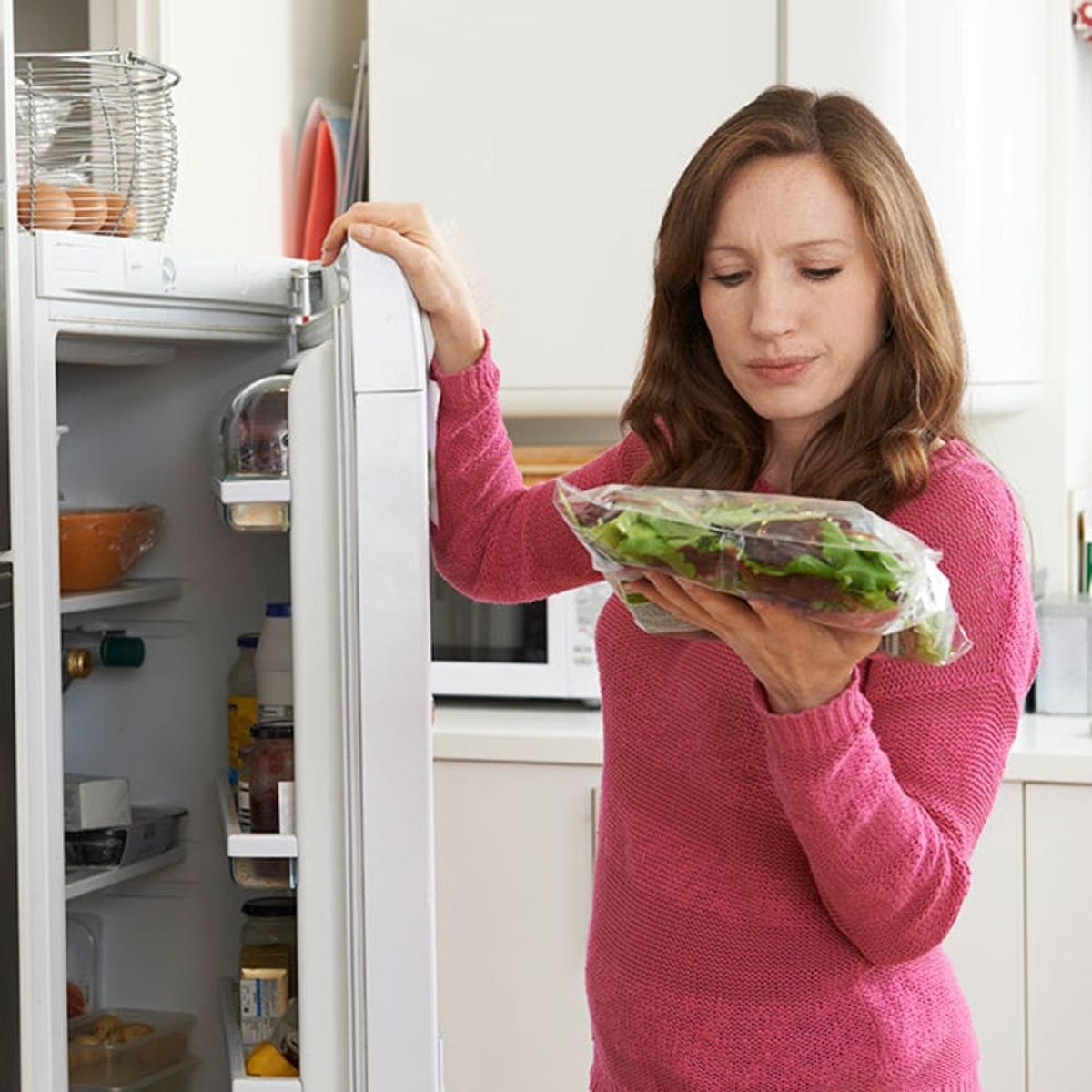Don’t toss that mushy apple just yet.
Why Healthy Eaters Waste the Most Food — and What You Can Do About It

It’s hard to imagine a downside to a healthy diet. We all know eating right reduces our risk of diseases like cancer, heart disease, and diabetes; keeps us supplied with necessary vitamins and minerals; and helps us maintain a healthy weight. But a study released earlier this year revealed a surprising drawback that often accompanies a well-balanced diet: increased food waste. Since many health-conscious people also care deeply about their global footprint, this is a troubling finding. How could our good intentions have such a detrimental effect on the planet?
Regardless of the quality of our diet, we’re all wasting dizzying amounts of food on a daily basis. The study found that, on average, American consumers don’t use 26 percent of food at home — a statistic that echoes other research conducted on the subject in the last several years. All told, from farm to fork to landfill, experts estimate about 40 percent of food produced goes uneaten, with Americans throwing away about a pound of food per day.

Things get especially dicey for healthy eaters, though, when researchers look at which foods get tossed first. The most commonly wasted foods, according to the study, are those that spoil the fastest: fresh fruits and vegetables. These items account for the highest percentage (39 percent) of the food that ends up in the trash, probably due to their limited shelf-life and consumer ignorance about proper storage methods. Unfortunately, these are also the foods that boast evidence-based benefits for our health.
In addition to analyzing food squandered in the home, the study also took into account the effects of a healthy diet on waste in the farming process. Though the data showed that the growth of fruits and veggies led to more losses of irrigation water and pesticides, there was one positive: Compared to other crops, these healthy foods were associated with less wasteful usage of the land itself, known as cropland waste.
Despite this silver lining, the take-home message is that people with higher-quality diets toss out the most food. So what are healthy eaters to do — throw up our hands in defeat and resort to shelf-stable processed junk? No, thanks. We’d rather keep the benefits a diet rich and fruits and veggies can bring. Thankfully, with a bit of thoughtfulness and planning, there are ways to prevent wasting fresh foods. Here are five strategies you can easily employ for more conscious, efficient food usage.
1. Meal plan. Plotting out a week’s meals helps narrow down the amount of food you buy to what you know you actually need, rather than what you think you might use. Once your weekly meal plan is complete, jot down the ingredients required to make it all, and don’t forget your list when you shop! Otherwise, you may wind up with a lot more than you bargained for in your cart — and in your trash.
2. Learn to preserve. You don’t need to go full-on Little House on the Prairie, canning jams and quarts of carrots for the winter to hang on to your produce. Instead, simply learn which fruits and veggies can be preserved by freezing. If you can’t eat something before it spoils, be sure to throw it in the freezer before it’s too late. (Or, if canning has always sounded intriguing to you, go for it!)
3. Store it right. Storing foods the proper way and at the right temperatures means you’ll get the most out of them. Not sure if potatoes go in the fridge or tomatoes should stay on the counter? Print out this handy infographic and keep it in your pantry for reference.
4. Use your senses. True, “use-by” or “best-by” dates serve a useful purpose, but they’re not always the absolute last word about whether an item is edible. Your food is not a ticking time bomb counting down to a printed date. Sometimes your eyes and nose can tell you more about an item’s freshness than a label. Before tossing (or using) any food, assess it with your senses.
5. Get creative. When fruits and veggies lose their youthful glow, it doesn’t have to spell doom for them. Multi-ingredient dishes like casseroles, soups, sauces, and smoothies can cover up a multitude of imperfections. When cooked in applesauce, it won’t matter if an apple was mushy, and in lasagna, wilted spinach won’t make waves. No one will be the wiser when you creatively repurpose produce, and you will have saved usable food from being wasted.
What do you do to cut back on food waste? Tweet us at @BritandCo!
(Photo via Getty)


















